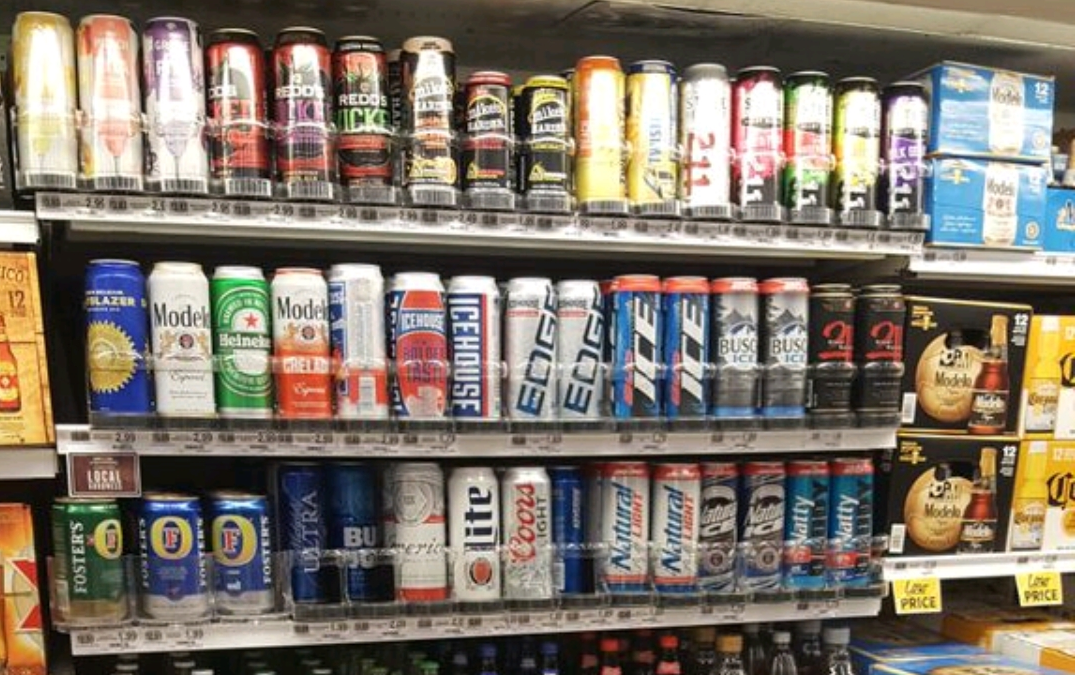Grocers across the country are tapping into a beer package historically associated mostly with convenience stores: singles.
As shopping trips shorten in length and increase in frequency, grocery stores are acting more like traditional convenience stores, positioning ready-to-eat and grab-and-go items near the front of stores for consumers on the run. And the cold beverages that complement meals, including beer, are following closely behind.
Sales of singles finished 2018 up 3.5% in grocery, per Nielsen. For perspective, that was enough to push sales of single cans 16 ounces or larger to $544.2 million. But MillerCoors says that’s just the start.
“We see a lot more momentum. More and more retailers are expanding their singles business, and we’re going to see more and more folks go after it,” says Brad Stevenson, vice president of national accounts for MillerCoors.
The reasons are straightforward: Singles help with loyalty, help increase trips and produce profitable sales for the category.
“This is still a huge opportunity,” says Stevenson, who leads the MillerCoors grocery team. How big? With 1 point of share worth an estimated $113 million, “We think the opportunity is worth that at the very minimum. That’s a figure worth getting up in the morning for, for sure.”
Moving more heavily into singles aligns more closely with how shoppers are using grocery stores in 2019.
The number of “quick trips” to grocery and convenience stores is on the rise. Today, some 41% of visits are classified as “quick,” according to Nielsen data. That compares with 38% in 2013, per Nielsen. Those trips last an average of about 8 minutes, with shoppers browsing fewer than three aisles, according to third-party data analyzed by MillerCoors. Grocers have responded by beefing up their prepared food sections and moving them toward the front of the store.
Those new sets also have opened the door for incremental beer singles sales. “Now they’re able to pick up a couple of beers to go with their prepared meal,” Stevenson says. “The key for grocers is to make it as easy as possible for people to shop the way they want to shop, and that’s increasingly getting in and out of the store faster.”
Singles are an ideal fit for those situations, data show. On quick trips, some 85% of shoppers who purchase beer bought either singles or small packs, according to Nielsen data. And more than 4 in 5 say they intend to drink a single within an hour of purchase. That makes it important that those singles are readily available and kept cold.
To be sure, large packs remain a critical part of any grocer’s assortment, both with quick trips and traditional stock-up trips, which produce the most revenue and highest check size among all trips. But singles represent a growing opportunity for additional growth by taking advantage of changing shopping trends.
“As consumers change how they shop, grocers must evolve and change with those consumers,” Stevenson says.
What’s moving? Not bombers or pick-six six-packs. Bomber sales dropped 20% in 2018 after falling 14% in 2017. Pick-six volume plummeted 37% last year after taking a 31% dive in 2017.
Instead, it’s mainstream 24-ounce cans bearing labels like Coors Light, Miller Lite, Bud Light, Busch Light, Corona and Heineken, which form the core of volume. Craft, flavored malt beverages and imports are fueling growth.
“Some drinkers are looking for quick refreshment, and others are looking for a more indulgent flavor to relax at the end of the day or to pair with a meal,” Stevenson says. And because the average singles shopper buys 1.5 singles per trip in the convenience channel, MillerCoors recommends retailers use two-for pricing to maximize sales. The category also tends to perform better when grocers minimize the number of price points on singles.
“The runway here is long, and consumers are voting with their wallets,” Stevenson says. “The quicker grocers move on this, the more it’s going to help with their overall business — not just for beer, but for the entire store.”

